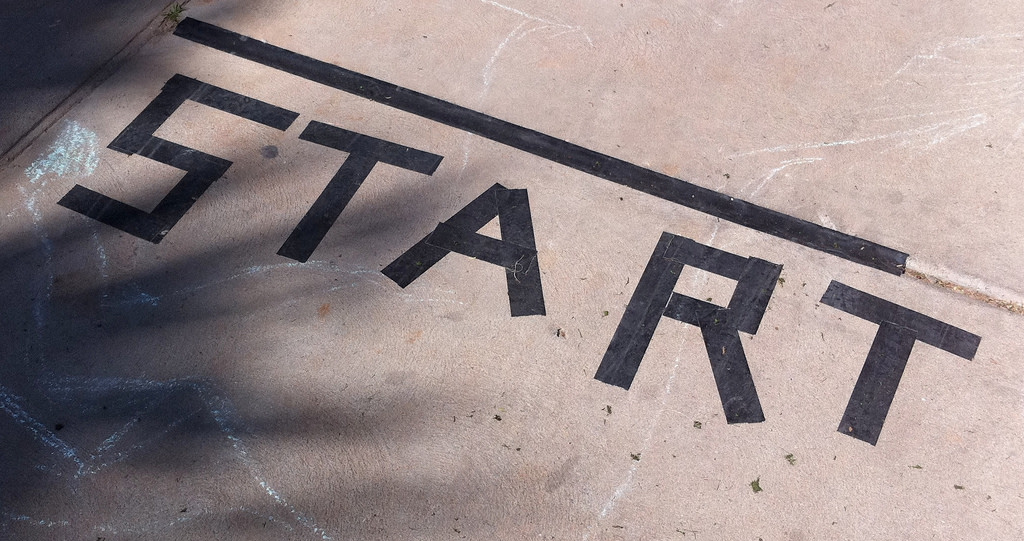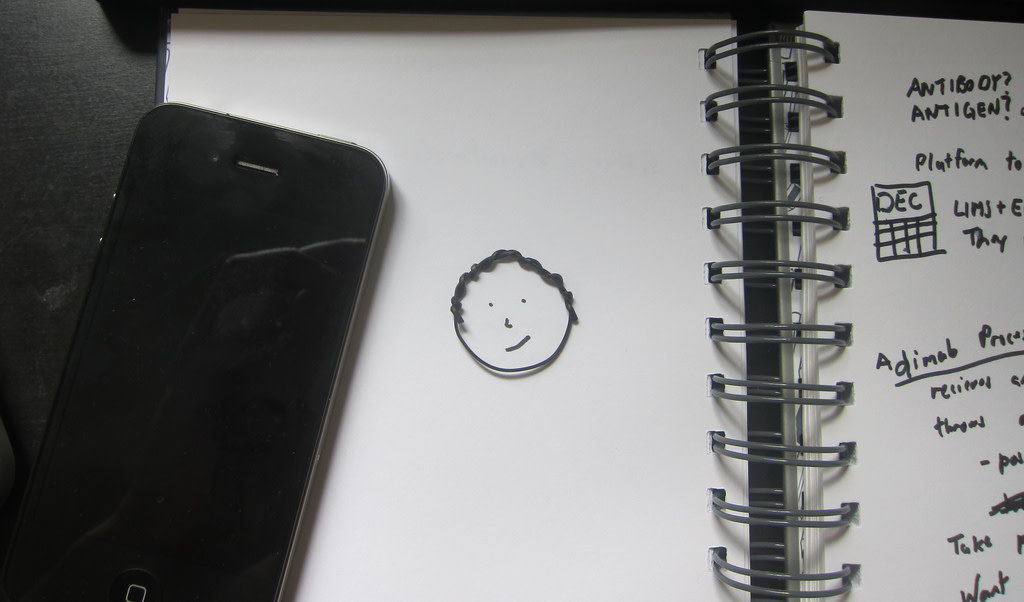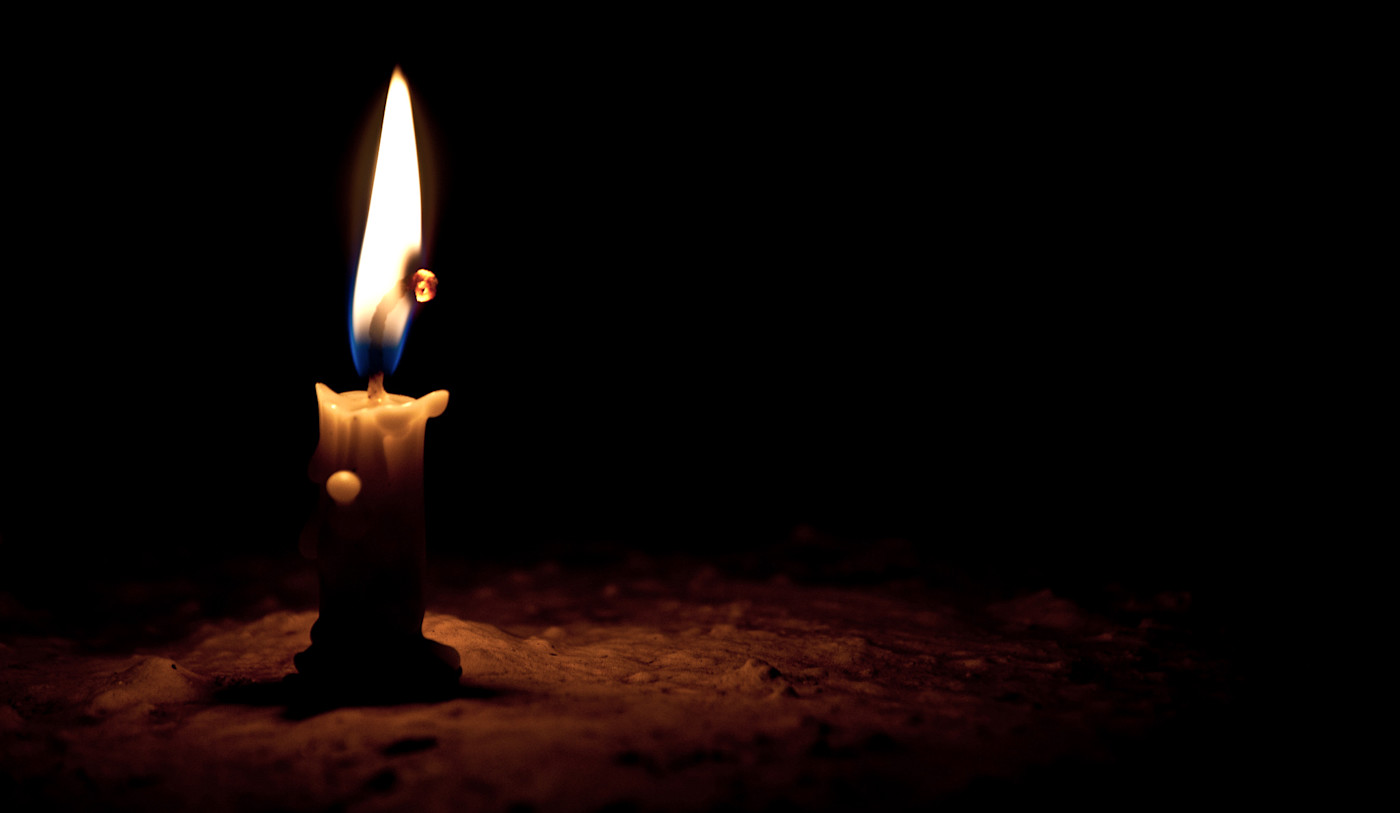Bad news: We’re biologically hardwired to procrastinate. Research shows we possess a limited amount of willpower that drains throughout the day, regardless of what we do. Stay on task for a full workweek and you might find yourself putting off your taxes until April 14. You simply won't have the power to do anything else.
Checking social media, watching Netflix, or just zoning out doesn’t mean that you’re a bad person. It means that you’re human. We can’t avoid procrastination. Instead, embrace it as a necessary chance to recharge, restore your confidence, and generate new ideas.
To use procrastination to your advantage, you first need to understand what’s behind your excuses. Research has linked personal emotions, interpersonal dynamics, and brain chemistry (among other factors) to procrastination, so there's a lot of things to target. For your procrastination to be functional, here are break activities that address—and counteract—the reasons you want to procrastinate in the first place.
What to do When:
You Don't Know Where to Start

What’s the difference between procrastinating and taking a break? A plan for what to do next.
When we waste time indefinitely, without any concrete plan for when or how we’ll return to our work, we create a secondary anxiety about what to do next that can consume us. Instead, use an actionable, measurable, results-oriented to-do list to transform aimless avoidance into conscious, deliberate downtime.
Write an Extensively Detailed To-Do List
...and ideally, stick to it.
Before you switch over to your "time wasters," write down all your outstanding tasks and their timeframe, preferably following the SMART model of articulating specific, measurable, achievable, realistic, time-bounded goals. When setting those time bounds, factor in any potential obstacles that might arise (i.e., the client who requires three follow-up emails, your office’s terrible Wifi connection, traffic).
Once you’ve at least planned to complete your tasks, you’ll feel more relaxed during your downtime and fully reap the benefits of procrastination.
...Or a "Done" List
Of course, "to-do" lists only work when you feel confident that you can actually check off some of the entries, or that completed task won’t be immediately replaced by a new one.
But if you’re not? Listing all your responsibilities will paralyze you and kickstart another round of procrastination. In that case, create a "done" list of everything you’ve accomplished during that day or week. On a losing streak? Even "did my laundry" counts.
For example, instead of logging her future tasks in an endlessly updating to-do list, Slate editor L.V. Anderson lists all her completed work in a spreadsheet to quantify the things she's accomplished.
"Thanks to this spreadsheet, I can tell you exactly how many pieces of content (for lack of a better term) I worked on last year (486), and the previous year (310), and the year before (292)," says Anderson. "At a single glance, this spreadsheet allows me to see everything I have done as a writer and editor over the past three years."
Write down your own achievements, paying particular attention to times that you overcame overwhelming conditions to get things done. If you’ve done it before, you can do it again, right? That in mind, you’ll can cultivate the self-assurance necessary to tackle overwhelming projects in the present.
Tip: Need an app to help? I Done This is a great tool to list everything you've accomplished, for a quick way to look back at your completed work over time.
The Ideas Just Aren’t Coming

Two days before a major deadline, you’re still staring at a blank Google doc. The harder you try to just coming up with something, the worse your ideas become.
During your coffee break, try these scientifically backed ways to spark creativity.
Start Doodling
Remember doodling squiggles in your notebook during boring classes? Turns out that those seemingly useless pictures—called "fluid" drawings—actually stimulate abstract thought, according to a study published in the Journal of Experimental Psychology. After tracing a series of fluid drawings—think ovals and curly cues—participants produced more creative uses for a newspaper than those who had traced linear shapes, like triangles and boxes.
By drawing abstract figures, you can fake your way into abstract thought. So when you’re stalled, start scribbling—as long as you stay outside the lines.
Pull Out Your Phone
...if it’s an iPhone, that is. According to a study by researchers at Duke University’s Fuqua School of Business, simply looking at the Apple logo can promote non-linear thinking.
In the study, more than 300 college students reported that they associated Apple with more creativity than they did IBM. After watching either an Apple or an IBM logo flash rapidly on a screen, they were then asked to generate novel uses for objects like bricks. Those exposed to the Apple logo generated a higher quantity and quality of creative uses than those who had seen the IBM logo. And hey: Perhaps Android's quirky robot can do the same.
Consider this your permission for an phone break. Scrolling through Kardashian gossip may not summon the genius of Steve Jobs, but it could spark the idea you need by next Friday.
You’re Feeling Down or Anxious

As much as we try to separate our personal and professional lives, we bring ourselves—and our moods—to work each day. By inhibiting the brain chemicals that regulate motivation, goal-driven behavior, and our overall health and well-being, our negative moods interfere with our productivity.
Disclaimer: Quickie lifestyle changes won’t solve diagnosed mood disorders overnight. But if you’re just feeling "blah" on a random Tuesday? A few lifestyle tweaks can hack those neurotransmitters and prime your brain for productivity.
Increase Your Dopamine
Consider this: You’re spearheading a time-intensive campaign that promises a major payoff. Pull a few late nights and you could land a raise or a promotion. But come 6 pm, you’re craving some couch time. What do you choose?
Your levels of dopamine—the neurotransmitter associated with motivation and goal-directed behavior—could determine your choice, as University of Connecticut psychology professor John Salomone demonstrated in a study of rats.
Two groups of rats—one with low dopamine levels, another with higher levels—were given a small pile of food. They could eat from that pile with no effort, but if they jumped over a fence, they’d receive another pile of food that was twice as high. Those with low dopamine chose the pile of food in front of them, sacrificing the bigger payoff for immediate gratification. But the rats with more dopamine were willing to jump the fence for the higher-value reward.
You can’t shoot dopamine into your veins, but you can eat a dopamine-packed lunch with foods like yogurt, nuts, omega-3 fats like salmon, and (mercifully) dark chocolate.
Decades of research have also linked high-intensity cardio—like running—to increased dopamine. But if your unmotivated mood also applies to your workout regimen, you’re in luck, as tai chi, yoga, and walking bring the same dopamine-boosting effects.
Increase Your Serotonin
Unlike dopamine, serotonin—a neurotransmitter that affects our moods—doesn’t directly affect motivation. However, serotonin shortages throw off our sleep patterns and digestion and increase anxiety, none of which create a positive working environment.
Good news, though. Increasing serotonin is as easy as getting a massage. Research shows that our serotonin levels peak after a session, most likely because of a 30% reduction in cortisol, the stress hormone that blocks the brain from producing serotonin.
If massages are out of your comfort zone (or budget), try adding serotonin-boosting vitamins and minerals like Vitamin C, magnesium, and B vitamins to your diet.
Increase Your Endorphins
Endorphins naturally fight stress, which frees up more of our cognitive resources for thinking of ideas, planning out projects, and actually getting this done.
We most commonly associate intense exercise with endorphin highs, but not every situation allows for a 45-minute spin class. While you still can’t burst into song during a conference call, singing (even if it’s humming at your desk or singing in the car during your commute) provides a more immediately accessible endorphin rush. In one study published in Evolutionary Psychology, singers were shown to have higher endorphin levels and reported more positive affect.
You’re Totally Burned Out

After a week of covering people’s responsibilities, cranking out reports, and working without a break, you can barely string two thoughts together, let alone produce anything worth presenting to others. Time to hit reset, not only to preserve your health, but to work smarter once you start again.
Add a Side Hustle
Your guitar jam sessions or personal blog serve a purpose beyond scratching your creative itch. Our creative side hustles also help us withstand work stress and prepare us to solve problems innovatively.
Many companies already recognize the power of side hustles, as more are offering money and/or time for employees to pursue their personal projects. But for the Type-A person who’s already prone to overdoing every effort, a creative hobby can easily turn into another high-pressure, results-oriented obligation.
The Huit Denim Company offers some things to remember about your passion projects to maintain the "passion" in them:
1. They don’t have to provide you with a living. You can still eat if they fail. 2. They don’t have a deadline. And as there is no time pressure, you don’t revert to your usual formula. You try new things. You experiment. You take risks. 3. This is a Labour of Love. You provide the ‘Labour’. And you provide the ‘Love’. So when you spend time on it, it is because you really want to. That keeps you coming back and pushing it on. That’s important. This thing will require you to keep plugging away at it, maybe, for years. As long as you follow those three principles, spreading your cognitive and creative across multiple endeavors will help you avoid exhaustion and approach problems from multiple perspectives.
Self Reflect
Career coaches recommend curing burnout with moderation and delegation. But if you knew how to moderate your efforts, you wouldn’t have overworked yourself to the point of burnout in the first place. To get there, you need to learn how to prioritize. Through a brief period of self-reflection, you can achieve this in the time it takes to get coffee.
37 years after his future father-in-law tricked him into attending a spiritual retreat, former Baxter International CEO Harry Kraemer still reflects for 15 minutes every night. He credits that routine for helping him manage 52,000 employees—and the associated stress—without "running around like a chicken with his head cut off."
Think this sounds self-centered or time-consuming? To Kraemer, self-reflection isn’t complicated, nor is it synonymous with prolonged, melodramatic self-indulgence. "Self-reflection is not spending hours contemplating your navel," Kraemer says. "It’s: What are my values, and what am I going to do about it? This is not some intellectual exercise. It’s all about self-improvement, being self-aware, knowing myself, and getting better."
When you’re feeling blitzed by busy work, separate yourself from your to-do list and remind yourself why you’re bothering to do them. Feeling stuck? Use Kraemer’s nightly self-reflection routine as your script.
1. What did I say I was going to do today in all dimensions of my life? 2. What did I actually do today? 3. What am I proud of? 4. What am I not proud of? 5. How did I lead people? 6. How did I follow people? 7. If I lived today over again, what would I have done differently? 8. Based on what I learned today, what will I do tomorrow in all dimensions of my life?
This exercise enables you to distinguish your "must haves" from your "nice to haves." From there, you can delegate nonessentials to coworkers and strike a healthier work-life balance—since to truly prevent burnout, you need to pair this reflection with action.
You Don’t Have a Deadline

Because they lack accountability to other people, creative entrepreneurs executing large-scale projects under self-imposed deadlines—like a novel or a new company—are especially prone to procrastination. Author Phyllis Korki attributes this mostly to the uniquely visceral fear of failure accompanying any deeply personal creative pursuit.
"A Big Thing is personally meaningful, has no firm deadline, is large and complex, and requires sustained concentration. What they have in common is that they are big and scary and carry a high rate of failure. If we don’t do them, we can comfort ourselves with the idea that if only we had put the effort into finishing them, they would have been brilliant and world-changing." To overcome insecurity-driven procrastination, Korki recommends that creatives impose a false sense of accountability on themselves. Set a due date—even if it's a fake one. That'll get you moving.
Create a Coworking Group
A fake date might not work, though. You'll need encouragement to push through. For that, reach out to other creatives in networking groups—on social media or in person—and organize a weekly or monthly meeting to discuss your progress on your various projects.
Besides giving yourself a checkpoint, these sessions provide a space to bounce ideas off of others. Editing the work of other people also encourages you to approach your own work more critically. And connecting with other creatives—who are likely struggling with the same self-doubt as you—can help you accept your fears as normal, natural parts of the creative process.
Worst case scenario, it forces you away from your laptop for a half hour. And as any remote worker can attest, that alone is worth the effort.
You’re Afraid of Discomfort

Pretty much any career involves some personal discomfort, whether it’s presenting in front of large crowds or pitching unconventional ideas to investors. Procrastination oftens stems from our tendency to avoid things that make us feel physically or psychologically uncomfortable, according to Dr. Pamela Garcy.
Intellectually, you probably realize that putting off those projects doesn’t permanently relieve your discomfort—it just delays it. But through many more pleasurable activities, you can practice coping with discomfort before it impedes your performance on a huge project.
Try Improv
For anyone who shuts down in awkward work situations, or stresses about every deviation to plan, improv classes for professionals—like those offered by legendary Saturday Night Live incubator Second City—provides a low-pressure, supportive, and more palatable opportunity to step outside their comfort zones.
During classes, performers role-play various situations, but don’t know they what will do or say onstage until they're on stage. They start each scene with a prompt from their audience and need to make up the story as they go along. The one rule? Say "yes, and" to every situation that arises during the scene.
Saying "yes" forces performers to accept and adapt to their partner’s actions and contribute their own words and actions to the scene. This cultivates the kind of adaptability and open-mindedness that helps professionals overcome discomfort in the workplace, says Tim Yorton, the CEO of Second City Communications who operates the famed theater’s improv class for business executives.
"So much of business–like life itself–is one big act of improv," says Yorton. "People make plans but, if they accept that there’s a whole bunch of stuff they can’t control, then most of what they’re doing is improvising."
Procrastination is Your Standard Operating Procedure
Like any other bad habit, our procrastination follows a pattern. We enter a project with the best intentions. Then….we encounter a roadblock. Or we get sucked into social media. As the deadline draws closer, we continue making excuses and avoiding our work until the final hour, when we throw together some random thoughts, send it into the ether, and hope it works.
Sound familiar? Though it takes between 18 and 254 days to create a lasting behavioral pattern, you can remotivate yourself in time for today’s big meeting with one last tip: Watching a sports movie.
Everyone loves the underdog stories in sports movies. What’s more inspiring than watching the little guy overcome obstacles to defeat their intimidating enemy, like Rocky beating Apollo Creed, or the 1980 US men’s hockey team beating the Russians?
We can apply that sensibility to our work, too. When we think we’re working to overcome a challenge outside of ourselves, we’re more motivated to put in the effort, according to author Nir Eyal.
"Scapegoating uses the power of reactance toward productive ends," Eyal says. "If we feel that someone or something is conspiring against us, we’re more likely to work harder to prove them wrong."
So after watching your favorite underdog conquer their opponent, create your own imaginary opponent, which Eyal calls a "scapegoat." Think of your own insecurities and doubts and assign them to that invisible, imaginary enemy. Are they telling you that you’re incompetent? That you didn’t deserve that promotion? That your work’s going to reflect poorly on the company?
By accomplishing your goals, you’ll prove your competence to that enemy—and yourself.
Don’t think about your real-life critics, though (i.e., your hypercritical manager or competitive coworkers). This external focus invites resentment and anger without actually changing your actions, according to Eyal.
"In order for scapegoating to work," says Eyal. "it’s important not to assign blame to something or someone specific (say, a boss) from the start; if we do so, we’ll shirk our responsibilities and won’t change our actions."
So much of business–like life itself–is one big act of improv
Tim Yorton
Science agrees: Your big project can—and probably should—wait until tomorrow. But don’t procrastinate on putting these tips to the test.
Jot down your tasks before you take that next coffee break—or perhaps, watch a quick sports win on YouTube. It just might give you the willpower to fight on.
Learn More Productivity Tips
You might have a limited supply of willpower, but that doesn't mean you can't improve it. Here's how to strengthen your willpower through diet, sleep, exercise, and more.
Sometimes you have to balance your core tasks with time just for creativity. Here's how, with details from two of 2016's most popular business books: Deep Work vs Messy: How to Balance Creativity and Productivity.
Then, learn how to master your time with scheduling techniques that will help you stay productive throughout the day.
Cover image by Campus France via Flickr; Start photo by Alan Levine via Flickr; Notebook sketch by Lokesh Dhakar via Flickr; Man on phone photo by Alon via Flickr; Candle photo by Anant Nath Sharma via Flickr; Calendar photo by Sebastien Wiertz via Flickr; Sax photo by asalaver via Flickr.





